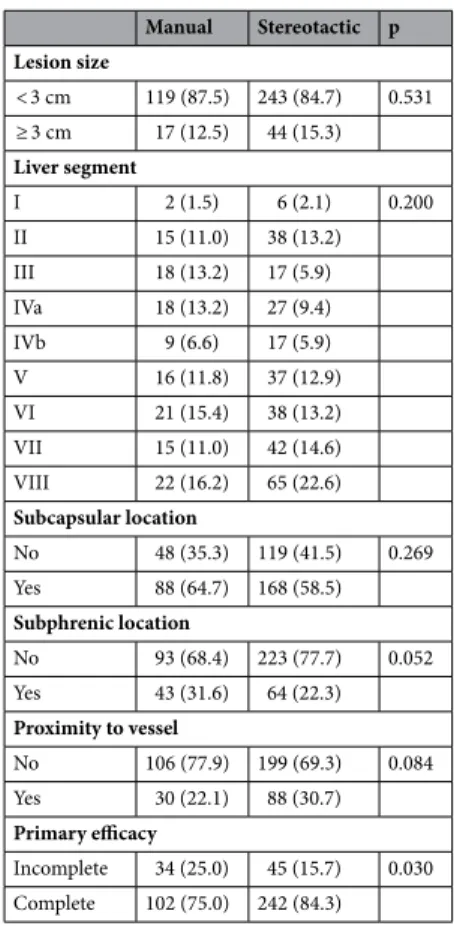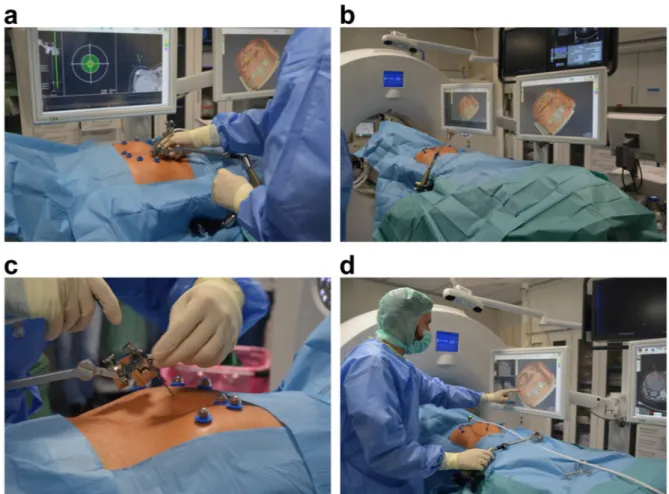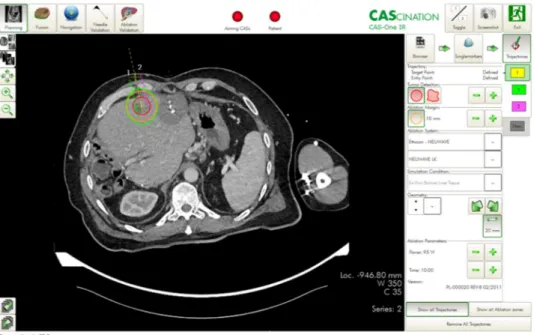Primary efficacy of percutaneous microwave ablation of malignant liver tumors: comparison
of stereotactic and conventional manual guidance
Jan Schaible
1*, Lukas Lürken
1, Philipp Wiggermann
2, Niklas Verloh
1, Ingo Einspieler
1, Florian Zeman
3, Andreas G. Schreyer
4, Reto Bale
5, Christian Stroszczynski
1& Lukas Beyer
1In this study, we compare the primary efficacy of computed tomography-navigated stereotactic guidance to that of manual guidance for percutaneous microwave ablation of liver malignancies. In total, 221 patients (140, 17, and 64 with hepatocellular carcinoma, cholangiocellular carcinoma, and liver metastases, respectively) with 423 treated liver lesions underwent microwave ablation (MWA).
Manual guidance (M) and stereotactic guidance (S) were used for 136 and 287 lesions, respectively.
The primary endpoint was the primary efficacy and the secondary endpoint was the radiation dose. A generalised estimating equation was applied to analyse the correlation between the primary efficacy (lesion basis) and the type of guidance, size and location of lesion. The primary efficacy rate was significantly higher in the S-group (84.3%) than in the M-group (75.0%, p = 0.03). Lesion size > 30 mm was negatively correlated with the efficacy rate (odds ratio 0.38; 95% confidence interval 0.20–0.74).
Stereotactic guidance was associated with a significantly lower dose length product (p < 0.01). In this retrospective study, percutaneous microwave ablation under stereotactic guidance exhibited significantly greater primary efficacy than conventional manual guidance.
In recent years, percutaneous ablation of primary and secondary liver tumors has become an important alterna- tive to surgical resection and is likely to occupy a more central role in the management of patients with hepato- cellular carcinoma (HCC) and liver metastases from colorectal cancer (CRC)
1.
One crucial factor during the procedure is the complete ablation of the malignant lesion with a sufficient safety margin. A study by Solbiati et al. showed that re-treatment of residual tumor tissue after ablation of colo- rectal metastasis significantly increased patient survival, thus emphasising the importance of complete tumor eradication
2. Similarly, for HCC, an initial complete response to percutaneous ablation was associated with improved survival
3.
Therefore, one predictive factor for patient survival is a high primary efficacy rate, which is defined as the percentage of tumor tissue that is successfully eradicated after the initial ablation procedure
3–5. To achieve high primary efficacy, the ablation probes must be placed as precisely as possible in or around the tumor, which can be a major challenge when tumors are in difficult locations. A large-scale study with over 1000 ablations showed that the incorporation of computer-assisted targeting techniques limits operator dependency and optimises the results
6. To achieve optimal probe placement, the improved visualisation of the lesion through software support, is a great advantage. Thus, both the anatomical situation and the expected ablation zone, in relation to the semi- automatically segmented tumor can be visualised in all spatial directions and also three-dimensionally (3D), which enables a correction or adjustment of the ablation settings, if necessary.
To our knowledge, no studies have compared primary efficacy rates between stereotactic ablation and conven- tional manual ablation. Therefore, the purpose of this study was to evaluate the primary efficacy of stereotactic
OPEN
1



